[ad_1]
Lê Hương
A visit to midland and mountainous regions this season offers a golden chance for people to try the roasted pupae of forest bees.
The pupae are a milky white when they’re removed from the nest. At this stage in their life cycle, the calming nutrients they contain can be used to treat headaches, nausea, coughs and colds.
The pupae are also used in Eastern medicine to fight bacteria, strengthen internal organs, anti-ageing, smooth the skin and enhance female beauty. They also improve health and endurance, and reduce muscle fatigue.
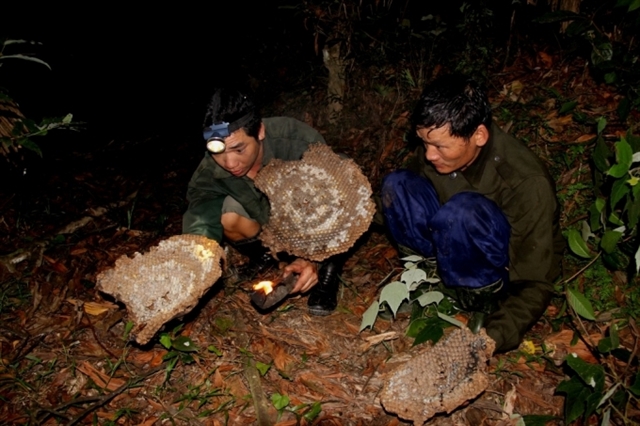
“Pupae can be used to make various dishes by roasting, grilling in bamboo shoot, stewing with salt and pepper or soaking with egg powder and roasting,” said chef Văn Hải from Thắm Thắng restaurant in Lào Cai. “Yet the simplest and tastiest way is to stir-fry them in fat with lemon leaves.”
The pupae are poached in boiling water first, then left to dry. Oil, chopped onion and garlic is fried in a pan, and then the pupae are added with some fish sauce and pepper. The cook should stir the mix very gently on a medium heat as the pupae are soft and break easily. When the pupae have turned yellow and smell good, the cook adds some lemon leaves, chilli and herbs and stirs for a little longer before serving.
Well-cooked pupae should keep their original form with a fragrant, fatty aroma. The dish can be eaten alone, with steamed rice or with pancakes.
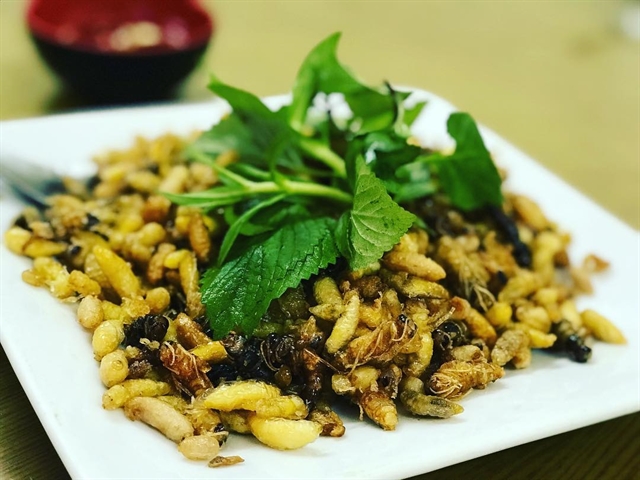
Bacon offers another twist to the dish, with the melted fat used to cook the pupae, and some people eat them in a porridge or salad.
“The first time I ate roasted pupae, four things stood out: delicious, buttery, fatty and unique,” said Lê Thảo Hiền, a tourist from Hà Nội.
According to Đinh Quang Thắng, the owner of Thắm Thắng restaurant, among the various kinds of papae, wasp was considered the best with the most delicate flavour.
The dish contains various nutrients including vitamins A, B1, B2, C and PP, calcium and phosphorous, as well as protein, so if you eat too much it might make you feel queasy, Thắng said.
People always head into the forest to hunt for forest bees between April and August as this is the time the bees nest.
“Retrieving a nest to collect forest bees is very dangerous as they are fierce and venomous,” Thắng explains.
A nest as big as a sink can hold some 1kg of small bees and pupae.
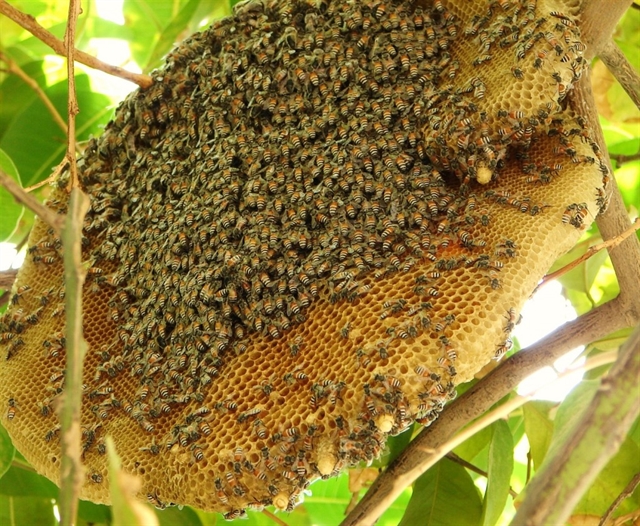
The dish is considered a delicacy in northern mountainous provinces like Lào Cai, Yên Bái and Lai Châu.
With Indian taro
In Mù Cang Chải, Yên Bái Province, bee pupae are cooked in fat with dọc mùng (Indian taro).
The pupae are poached in boiling water first. The dọc mùng should be of medium age, not too young, nor too old.
The dọc mùng is peeled into small pieces, 2-3cm in length. It is then soaked for a while in water to get rid of the resin. The cook uses oil or pig’s fat in hot pan to fry some onion, then the pupae are added and stirred well for five minutes, then set aside. The dọc mùng is then stirred in the fat until well cooked, and the pupae are returned with some salt and sliced lemon leaves.
The dish should be eye-catching with the light green dọc mùng and delicious with the fatty fragrant pupae mixed well with spices and lemon leaves.
“It’s really good to eat while drinking beer or wine,” said Phan Mạnh Tiến, a local in Mù Cang Chải.
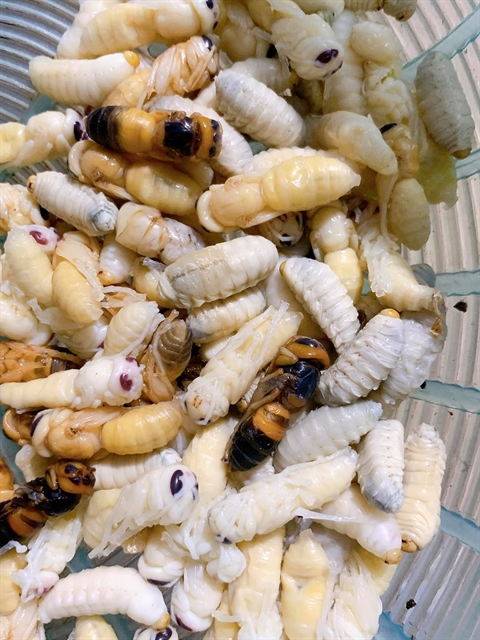
With bamboo shoots
The Mường people in Lai Châu Province cook bee pupae with bamboo shoots.
Onions are fried well in oil, then the pupae are added and cooked until brown. Bamboo shoots are added with chilli, spices and herbs to finish the dish.
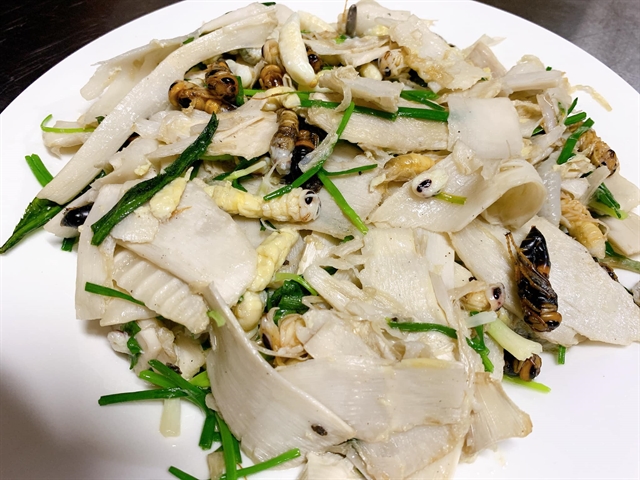
The dish is eaten with pickled spring onions.
“The buttery taste of the pupae mixes with the sour, hot taste of the bamboo shoots, and the sweet and pungent aroma of the spring onions, offering an unique taste,” said Lò Vinh Quang, a local in Lai Châu. “The dish is served with corn wine as well.” VNS
[ad_2]
Source link